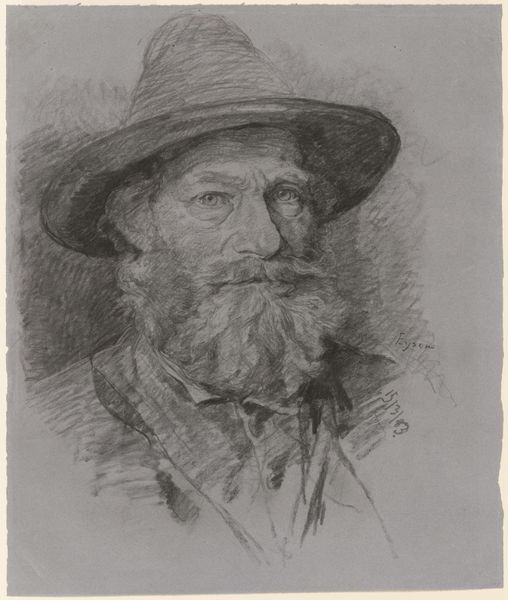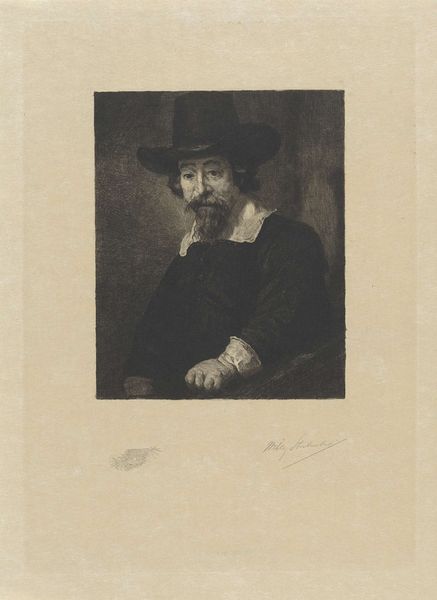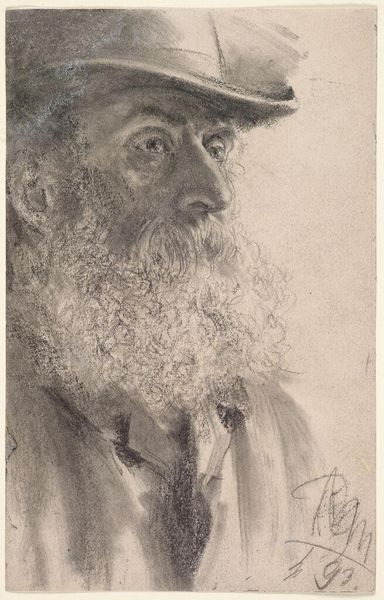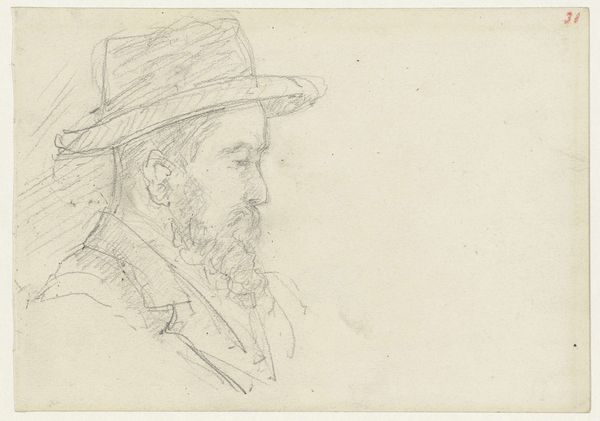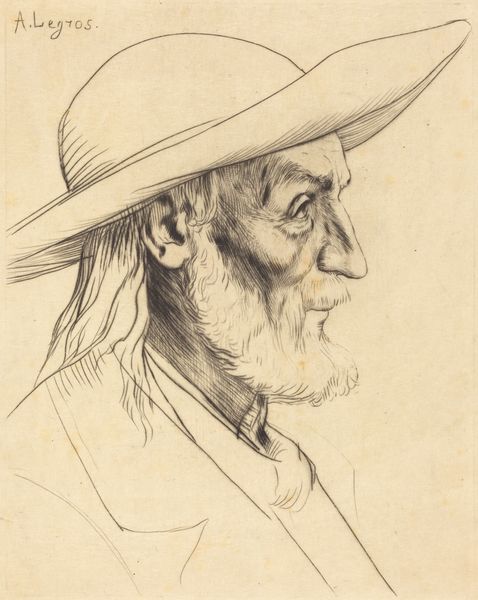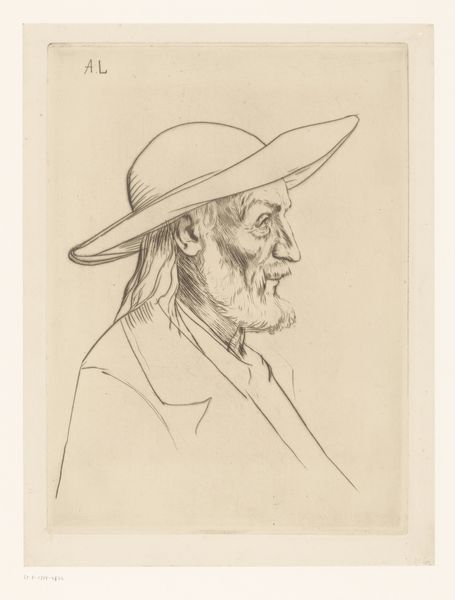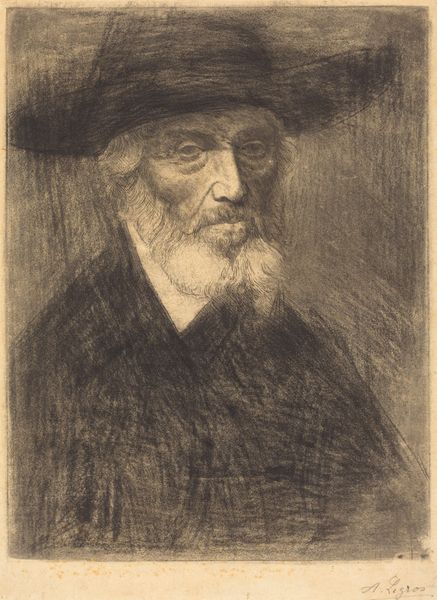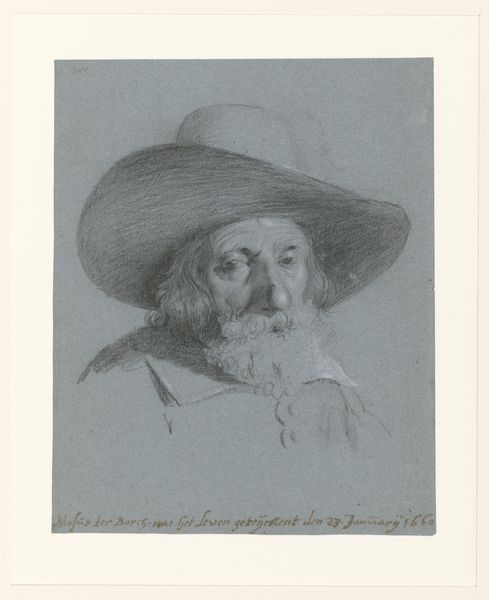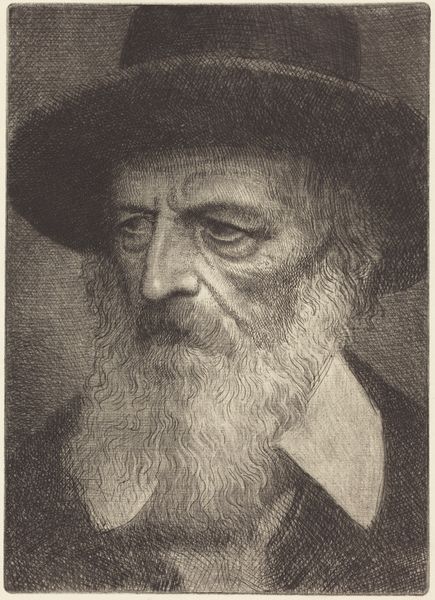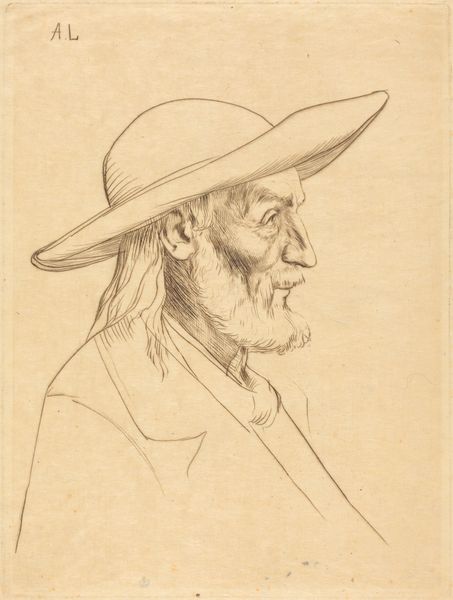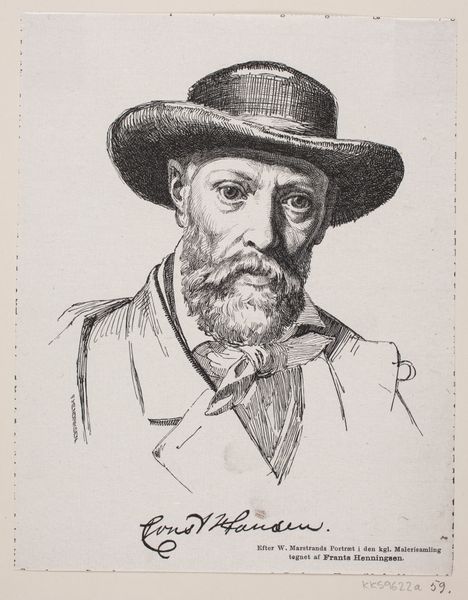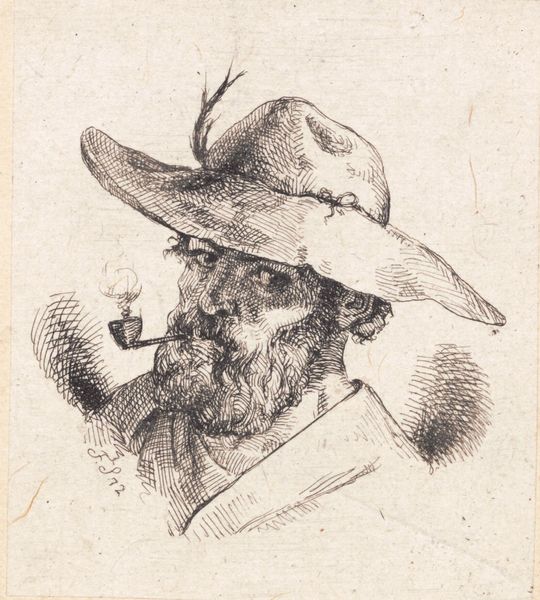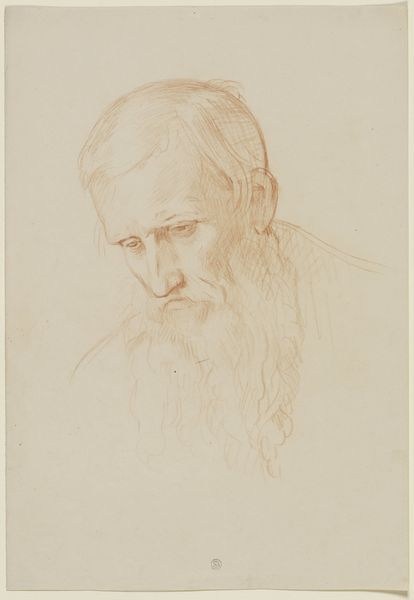
drawing, print, pencil, graphite
#
portrait
#
drawing
# print
#
charcoal drawing
#
pencil drawing
#
pencil
#
graphite
#
animal drawing portrait
#
portrait drawing
#
realism
Copyright: National Gallery of Art: CC0 1.0
Curator: Here we have a compelling portrait of Alfred, Lord Tennyson by Alphonse Legros. Executed in graphite, charcoal, and pencil, the work embodies a soft realism. What's your initial impression? Editor: Immediately, I see the weariness etched into his face, contrasted with a romantic softness in his flowing beard. It evokes a Victorian melancholia, tinged with privilege, wouldn’t you say? Curator: Indeed. The hat creates a halo, elevating his status while casting shadows that highlight the aging process. In that way, the shadow embodies the psychological weight of reputation and legacy. Editor: Absolutely. Think about the socio-political context: Tennyson was Poet Laureate. This image participates in constructing that mythos, a carefully mediated persona—the pensive, artistic genius sanctioned by the state. Curator: I agree. However, Legros's draftsmanship hints at vulnerability too. The slightly blurred lines, the delicate shading--they humanize the figure. Editor: Perhaps, but even that “humanity” becomes part of the brand. We’re seeing a man consciously curating his image, complicit in solidifying a patriarchal system of artistic validation. How much is the perceived vulnerability carefully performed for his contemporary audience? Curator: A fair point. The symbols here – the beard suggesting wisdom, the relaxed yet composed posture denoting authority, even the artistic medium – all construct a particular narrative of masculine creative power. The portrait memorializes a poet celebrated in his time, capturing his intellectual persona in the late 19th century. Editor: It makes you think about who gets canonized, doesn’t it? Portraits like this one solidified the idea of the "Great Man" of literature, often excluding women, people of color, and other marginalized voices. I think interrogating these power structures and historical portrayals continues to be necessary when studying such works today. Curator: I concur. Analyzing Legros’s portrait through various lenses--symbolic, artistic, socio-historical--allows a deeper understanding of both Tennyson's enduring image and the mechanisms of cultural canonization at play. Editor: Precisely. Legros gives us the "official" Tennyson, but, from a contemporary point of view, the real story may be hiding in plain sight, a meditation on power, image, and the weight of societal expectations.
Comments
No comments
Be the first to comment and join the conversation on the ultimate creative platform.
